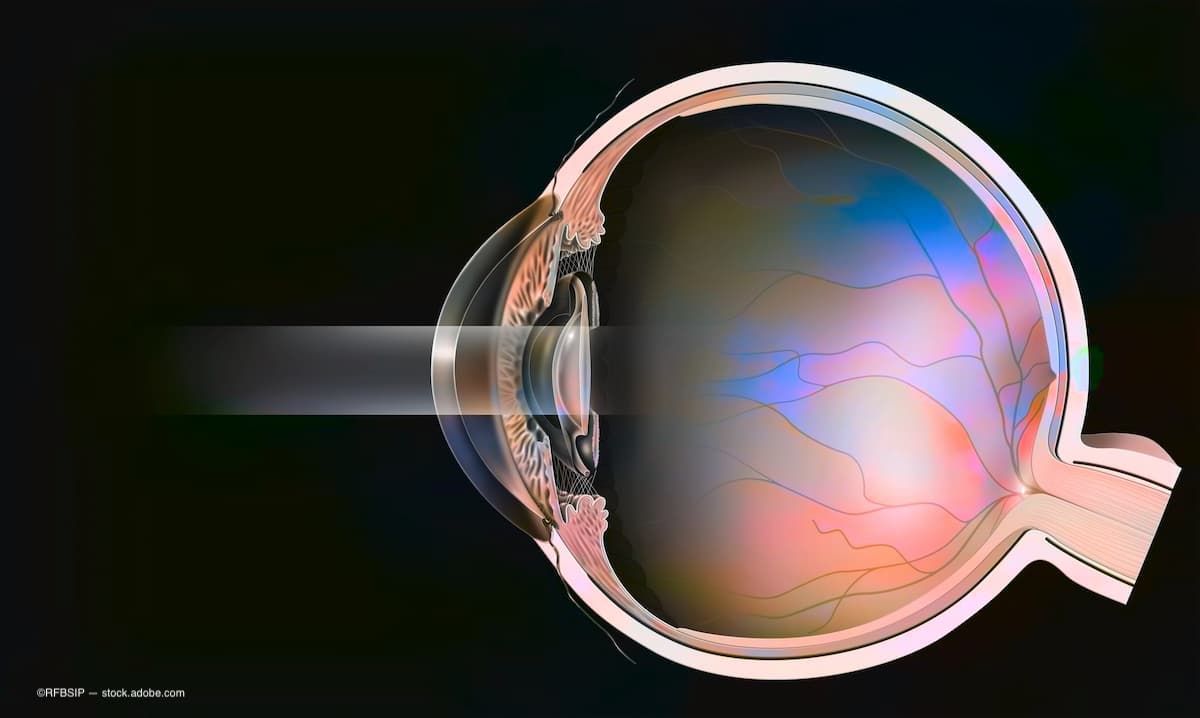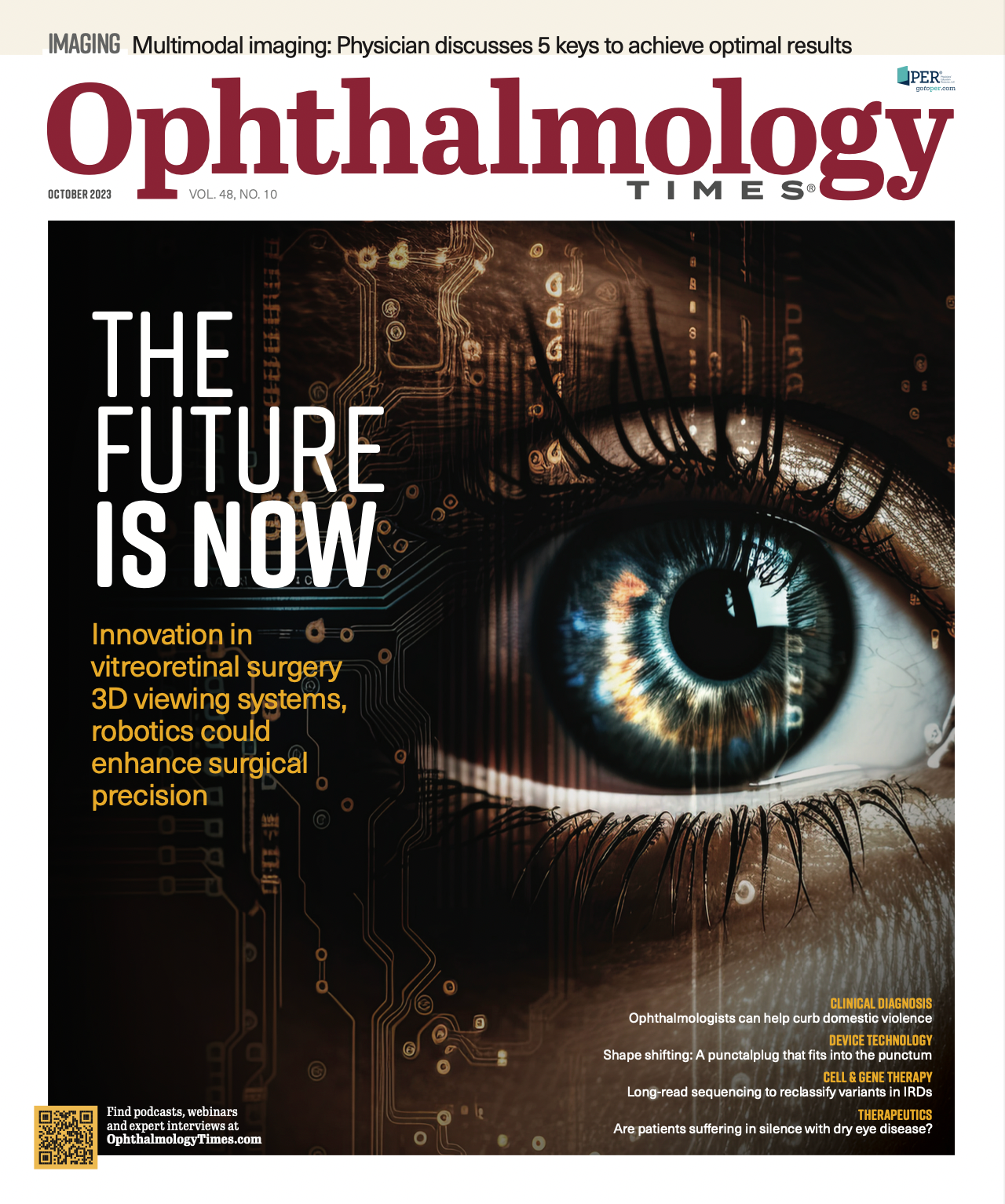- COVID-19
- Biosimilars
- Cataract Therapeutics
- DME
- Gene Therapy
- Workplace
- Ptosis
- Optic Relief
- Imaging
- Geographic Atrophy
- AMD
- Presbyopia
- Ocular Surface Disease
- Practice Management
- Pediatrics
- Surgery
- Therapeutics
- Optometry
- Retina
- Cataract
- Pharmacy
- IOL
- Dry Eye
- Understanding Antibiotic Resistance
- Refractive
- Cornea
- Glaucoma
- OCT
- Ocular Allergy
- Clinical Diagnosis
- Technology
Capsulotomy creation is equally safe using manual or energy-based method
Physician notes endothelial cells play key role in hydration, transparency of cornea.
(Image Credit: AdobeStock/RFBSIP)

Corneal endothelial cell density measured postoperatively does not differ in patients who have undergone cataract surgery with phacoemulsification whether the capsulotomy was performed using continuous curvilinear capsulorhexis (CCC) or precision pulse capsulotomy1 (PPC; Zepto), according to first author Mark C. Vital, MD, and colleagues at Houston Eye Associates in Texas.
Endothelial cells play a role in the hydration and transparency of the cornea. Maintaining their density in the eye is key. Phacoemulsification performed to remove cataractous lenses has been associated with varying degrees of endothelial cell loss at 1 to 3 months postoperatively, with losses reported ranging from 5% to 20%.2-14 The cellular loss is theorized to result from ultrasound energy that is delivered during phacoemulsification and fluidic turbulence during surgery.7,15,16
Investigators compared the endothelial cell count after cataract surgery in patients whose capsulotomy was created using CCC or PPC. CCC is a manual procedure that creates a capsular tear using capsulorhexis forceps, whereas PPC is an automated procedure that applies energy to create a capsulotomy in 4 ms.
The authors explained that PPC is performed using an intraocular device with a tip comprising a small flexible suction cup with an embedded nitinol capsulotomy ring. For PPC capsulotomy creation, the tip is inserted into the eye and suction is applied, allowing the suction cup and nitinol ring to fully applanate onto the anterior capsule, the surgeons explained. The PPC control console then uses a short sequence of 12 microenergy pulses that last for a total of 4 ms applied to the capsulotomy ring to create a cutting force based on the rapid phase transition of water molecules in capsular tissue. Once the capsulotomy is created, the suction cup and nitinol ring are removed from the eye, the authors further stated.
The results showed that the mean percentage of endothelial cell density loss at 1 month postoperatively was 11.5% among the patients randomly assigned to the CCC group vs 12.3% in the PPC group. This difference did not reach statistical significance (P = .818). At 3 months, the respective percentages of endothelial cell density loss were 11.7% and 12.4%, which also was nonsignificant (P = .815).
The mean percentage of hexagonal cells at 1 month was 54.3% in the CCC group vs 54.7% in the PPC group (P = .695). At 3 months, the percentages were 56.2% and 54.7% (P = .278).
The coefficient of variations at 1 month was 34.4% in the CCC group vs 34.3% in the PPC group (P = .927). At 3 months, the respective percentages were 32.7% and 33.4% (P = .864).
The investigators concluded that there were no significant differences in the 2 study groups in any of the corneal endothelial cell parameters measured. “PPC use during cataract surgery does not result in any increased endothelial cell loss beyond that normally associated with this surgery,” the authors concluded.

Mark C. Vital, MD
E: MVital@HoustonEye.com
Vital is a cataract surgeon at Houston Eye Associates in Texas. He is a consultant to Centricity Vision, Inc. (Zepto).
References:
1. Vital MC, Jong KY, Trinh CE, Starck T, Sretavan D. Endothelial cell loss following cataract surgery using continuous curvilinear capsulorhexis or precision pulse capsulotomy. Clin Ophthalmol. 2023:17:1701-1708. doi:10.2147/OPTH.S411454
2. Acar BT, Utine CA, Acar S, Ciftci F. Endothelial cell loss after phacoemulsification in eyes with previous penetrating keratoplasty, previous deep anterior lamellar keratoplasty, or no previous surgery. J Cataract Refract Surg. 2011;37(11):2013-2017. doi:10.1016/j.jcrs.2011.05.033
3. Hwang HB, Lyu B, Yim HB, Lee NY. Endothelial cell loss after phacoemulsification according to different anterior chamber depths. J Ophthalmol. 2015;2015:210716. doi:10.1155/2015/210716
4. Fea AM, Consolandi G, Pignata G, et al. A comparison of endothelial cell loss in combined cataract and MIGS (Hydrus) procedure to phacoemulsification alone: 6-month results. J Ophthalmol. 2015;2015:769289. doi:10.1155/2015/769289
5. Choi JY, Han YK. Long-term (≥10 years) results of corneal endothelial cell loss after cataract surgery. Can J Ophthalmol. 2019;54(4):438-444. doi:10.1016/j.jcjo.2018.08.005
6. Dewan T, Malik PK, Kumari R. Comparison of effective phacoemulsification time and corneal endothelial cell loss using 2 ultrasound frequencies. J Cataract Refract Surg. 2019;45(9):1285-1293. doi:10.1016/j.jcrs.2019.04.015
7. Teoh LS, Foo SW, Mansurali VN, Ang EL, Md Noh UK, Bastion MC. Evaluation of corneal endothelial cell loss after uncomplicated phacoemulsification cataract surgery with intracameral phenylephrine. Asia Pac J Ophthalmol (Phila). 2017;6(4):318-325. doi:10.22608/APO.2016206
8. Kim EC, Kim MS. A comparison of endothelial cell loss after phacoemulsification in penetrating keratoplasty patients and normal patients. Cornea. 2010;29(5):510-515. doi:10.1097/ICO.0b013e3181c11e0e
9. Lass JH, Benetz BA, He J, et al. Corneal endothelial cell loss and morphometric changes 5 years after phacoemulsification with or without CyPass micro-stent. Am J Ophthalmol. 2019;208:211-218. doi:10.1016/j.ajo.2019.07.016
10. Walkow T, Anders N, Klebe S. Endothelial cell loss after phacoemulsification: relation to preoperative and intraoperative parameters. J Cataract Refract Surg. 2000;26(5):727-732. doi:10.1016/S0886-3350(99)00462-9
11. Mahdy MA, Eid MZ, Mohammed MA, Hafez A, Bhatia J. Relationship between endothelial cell loss and microcoaxial phacoemulsification parameters in noncomplicated cataract surgery. Clin Ophthalmol. 2012;6:503-510. doi:10.2147/OPTH.S29865
12. Reuschel A, Bogatsch H, Barth T, Wiedemann R. Comparison of endothelial changes and power settings between torsional and longitudinal phacoemulsification. J Cataract Refract Surg. 2010;36(11):1855-1861. doi:10.1016/j.jcrs.2010.06.060
13. Tsuneoka H, Shiba T, Takahashi Y. Ultrasonic phacoemulsification using a 1.4 mm incision: clinical results. J Cataract Refract Surg. 2002;28(1):81-86. doi:10.1016/S0886-3350(01)01235-4
14. Gogate P, Ambardekar P, Kulkarni S, Deshpande R, Joshi S, Deshpande M. Comparison of endothelial cell loss after cataract surgery: phacoemulsification versus manual small-incision cataract surgery: six-week results of a randomized control trial. J Cataract Refract Surg. 2010;36(2):247-253. doi:10.1016/j.jcrs.2009.09.023
15. Hayashi K, Hayashi H, Nakao F, Hayashi F. Risk factors for corneal endothelial injury during phacoemulsification. J Cataract Refract Surg. 1996;22(8):1079-1084. doi:10.1016/S0886-3350(96)80121-0
16. Richard J, Hoffart L, Chavane F, Ridings B, Conrath J. Corneal endothelial cell loss after cataract extraction by using ultrasound phacoemulsification versus a fluid-based system. Cornea. 2008;27(1):17-21. doi:10.1097/ICO.0b013e3181583115

